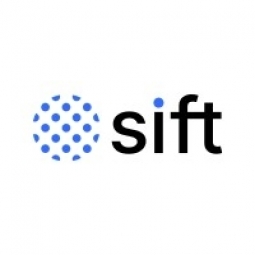公司规模
Large Corporate
地区
- America
国家
- Canada
- United States
产品
- Sift Payment Protection
- Sift Insights
技术栈
- Sift Score
- QR code
实施规模
- Enterprise-wide Deployment
影响指标
- Cost Savings
- Productivity Improvements
技术
- 应用基础设施与中间件 - API 集成与管理
适用功能
- 销售与市场营销
用例
- 欺诈识别
服务
- 数据科学服务
关于客户
Atom Tickets reimagines the most convenient way for users to plan a night out at the movies and preorder concessions. The free app and website provide relevant reviews, trailers, and synopses to help moviegoers make the best decision on what to see. Atom users can quickly select the movie, theater, showtime, and seats, and after purchasing tickets they can invite friends and Atom will share the selected showtime and seats with them. At the theater, users skip the box office lines and go right to the ticket attendants, who scan a QR code on the user’s phone or Apple Watch to redeem their order. With millions of users on the platform, Atom Tickets operates in the US and Canada and is enabled on 22,000 screens.
挑战
Atom Tickets was struggling with chargebacks; their chargeback rate was very high, which decreased their revenue and order volume. There isn’t a team focused on preventing fraud – while there are stakeholders across departments, fraud is a one-man army led by Trust & Safety Specialist Aaron Rennell. Managing all of Atom Tickets’ fraud was already a big job but it got even trickier for Aaron when Atom Tickets experienced spikes in activity during blockbuster movie ticket sales. The significant increase in online movie sales for the company also brought in an uptick in fraudulent purchases for blockbuster must-see movies. Given the increase in potentially fraudulent purposes, they needed a solution that would automate and streamline fraud prevention to make it manageable, and help them greatly reduce their chargeback rate.
解决方案
On a recommendation from an industry peer, the head of product at Atom Tickets turned to Sift for a solution. Once they implemented Sift Payment Protection, it took only a few weeks for the model to start yielding powerful results. Within a month, their chargeback rate decreased significantly. Workflows were also set up to automatically block users with a certain Sift Score, which worked well in tandem with rules that Atom Tickets had also set up within Sift. Aaron found Sift Insights (reporting capabilities) integral to his investigations; utilizing the Explore feature, he could view all ticket sales by Sift Score (risk score) and make bulk decisions – a task that previously would have required dropping data into a spreadsheet and reviewing accounts one by one, taking days to complete. This saved Aaron a massive amount of time when quickly dealing with large spikes in ticket sales. And with Roles and Permissions, he was able to see which users across departments were in review queues.
运营影响
数量效益

Case Study missing?
Start adding your own!
Register with your work email and create a new case study profile for your business.
相关案例.

Case Study
Largest Production Deployment of AI and IoT Applications
To increase efficiency, develop new services, and spread a digital culture across the organization, Enel is executing an enterprise-wide digitalization strategy. Central to achieving the Fortune 100 company’s goals is the large-scale deployment of the C3 AI Suite and applications. Enel operates the world’s largest enterprise IoT system with 20 million smart meters across Italy and Spain.

Case Study
KeyBank's Digital Transformation with Confluent's Data in Motion
KeyBank, one of the nation's largest bank-based financial services companies, embarked on a national digital bank initiative following the acquisition of Laurel Road, a digital consumer lending business. The initiative aimed to build a digital bank focused on healthcare professionals looking to refinance student loans and buy homes. A significant challenge was reducing the time to market for new products by democratizing data and decoupling systems across the IT landscape. Like many large enterprises, KeyBank had a variety of vendor applications, custom applications, and other systems that were tightly coupled to one another. New projects often required developing specific point-to-point integrations for exchanging data, which did not address the needs of other downstream systems that could benefit from the same data.
Case Study
BharatPe: Leveraging Google Cloud for Enhanced Data Analytics and AI to Promote Digital Payments
BharatPe, a fintech company founded in 2018, aimed to make digital payments more accessible for over 10 million small offline merchants and kirana store owners in India. However, the company faced challenges in managing the massive amounts of data generated daily from payment processing to business analysis. Prior to using Google Cloud, BharatPe managed its legacy data warehouse with limited capacity to run a large number of queries. The company ran key performance indicator (KPI) reports, without the ability to understand real-time data patterns. Loading three months of data for quarterly reports took more than 30 minutes on the legacy system, and in some cases, queries failed because the system could not scale to support analytical needs. Additionally, BharatPe operates in a multi-cloud environment for disaster recovery and needed a data platform that could run queries against data, regardless of where it resides.
Case Study
Barclays Enhances Customer Experience with IBM BPM Solution
Barclays, a global bank operating in over 50 countries and serving nearly 60 million customers, faced a significant challenge in improving and streamlining the customer experience. The bank's relationships with customers were multifaceted, with customers engaging with the bank through various channels such as mobile, online, and branch locations. The bank had identified 400 different customer journeys, and the challenge was to align these across the enterprise and improve them in a way that positively impacted customers quickly. The director of operations at Barclays, Mike Gamble, recognized the need to transform the bank's processes around customer journeys. He aimed to enhance the understanding of how various functions contribute to delivering customer experiences and then expedite the rollout time of these new processes to achieve the end goal for the customer.
Case Study
Bank BRI: Revolutionizing Financial Inclusion in Asia with Digital Banking
Bank Rakyat Indonesia (Bank BRI), one of the largest banks in Indonesia, was faced with the challenge of increasing financial inclusion among unbanked Indonesians. The bank had an ambitious target of having 84 percent of Indonesians participating in the banking system by 2022. However, the bank's legacy technologies were proving to be a hindrance in achieving this goal. Each of the bank's products had their own public APIs, which were difficult to manage, secure, and monetize. Additionally, the process of onboarding new partners using host-to-host and VPN technology was time-consuming, taking up to six months. The bank also faced the challenge of reaching a largely rural population, with an estimated $8.3 billion in currency being held outside the banking system.
Case Study
Stabilizing an Avalanche of Data: Comcast's Journey with Data360 Analyze
Comcast Corporation, the second largest broadcasting and cable television company in the world by revenue, was facing significant challenges due to the volume and variety of operational and billing data. With over 20 million customers across 40 states, the company needed to establish standardized processes and automate data flows to overcome a wide range of billing, finance, compliance, supply chain, and marketing challenges. In 2009, the company was dealing with massive amounts of data that were causing major revenue assurance challenges. The customer billing review interface required the processing of a billion records every month, within very tight timeframes. The company’s decentralized accounting and finance operations, with 20 different regions and 30 different accounting practices, further compounded these issues.







